7 Amazing Black History Trips That Will Inspire Your Students
African-American history has long been under or misrepresented in our country. So what better way to help rewrite the narrative than to see the places where it actually happened? Get ready – because these 7 amazing Black history trips will inspire your students!
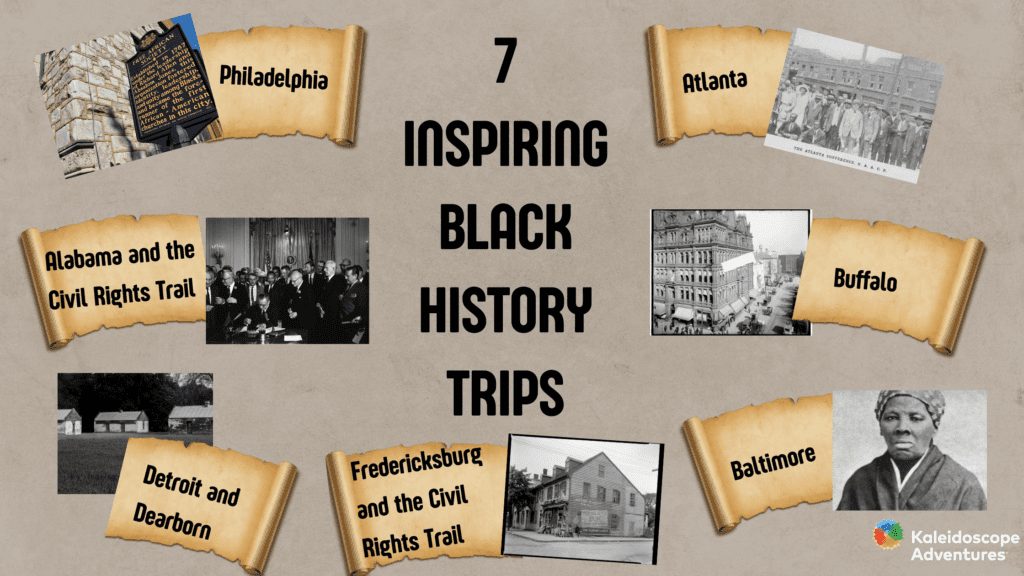
1. Philadelphia
While we know Philadelphia as one of most historic cities in America, it’s often overlooked as an area rich in Black history. In fact, its history begins with the first ships carrying enslaved people to Pennsylvania.
Notable Firsts
Visit Mother Bethel A.M.E. Church, the founding church of the African Methodist Episcopal denomination. Or stop at the African American Museum in Philadelphia – one of the country’s first major museums dedicated to Black American history.
Here you’ll also find a number of key stops along the Underground Railroad like the Johnson House Historic Site and Belmont Mansion (home to the Underground Railroad Museum.) These are just a few spots where the first freedom seekers sought safe refuge on their journeys.

Faces and Places
Learn more about the African American legacy when you visit sites like Cliveden, Stenton, The President’s House, The Colored Girls Museum, Aces Veterans Museum and the Lest We Forget Museum of Slavery.
You can also book a walking tour like The Black Journey. Explore historic sites like the 7th Ward and Congo Square while learning about the successes, challenges and important contributions of these early Black Americans.
2. Atlanta
Civil Rights and Educational Sites
Atlanta’s civil rights legacy and rich cultural tapestry are at the heart of this city’s appeal. Widely known as the birthplace of the civil rights movement, there is much here to unpack and explore.
The Martin Luther King, Jr. National Historic Site is a four-block treasure trove of historical significance. Visit the place where Martin Luther King, Jr. lived, worked, worshiped and is buried. There is no fee associated with the site and a U.S. park ranger will guide your tour.
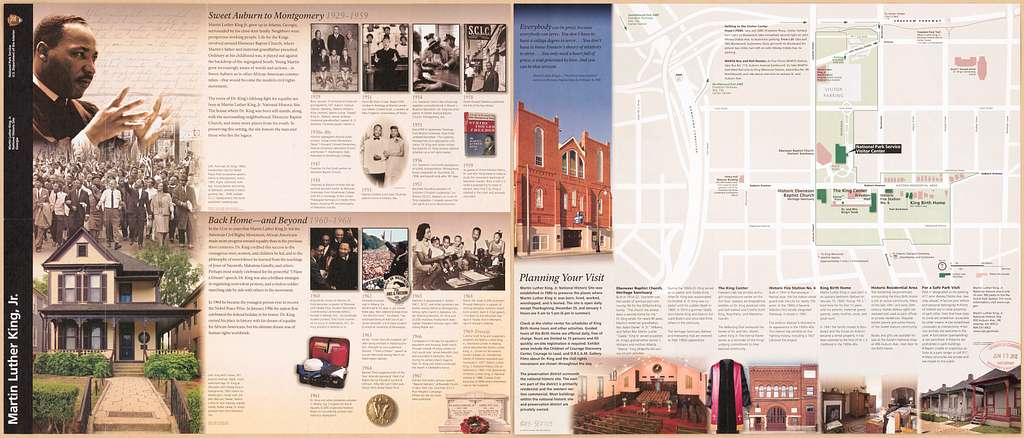
The National Center for Civil and Human Rights opened in 2014 with a mission to inspire people to tap into their own power and create change in the world.
The Center’s exhibits feature papers and artifacts of Dr. Martin Luther King, Jr. It also includes the history of the civil rights movement in the United States, and stories of the struggles for human rights in our world today.
The Tubman African American Museum is named for Harriet Tubman and features a permanent exhibit of vintage photographs, historical documents and works of art from the Tubman’s collection.
The museum’s mission is to educate people about African American art, history, and culture, as well as to promote harmony among all races. It is widely considered one of the South’s most important cultural institutions and a stellar choice for student groups.
3. Alabama and the Civil Rights Trail
The civil rights movement was a volatile and influential time in our nation’s history. And Alabama was at the heart of the crusade. Seeing these iconic places firsthand is a powerful experience for students.
Follow the Civil Rights Trail
Start at the Dexter Avenue King Memorial Baptist Church, which was the backbone of the 1955-56 Montgomery bus boycott.
Dr. Martin Luther King, Jr., who served as pastor here from 1954 – 1960, organized the boycott, which propelled him into the national spotlight.
Next, discover the untold stories of the Freedom Riders at the Freedom Rides Museum, followed by stop at the Edmund Pettus Bridge in Selma and site of the brutal Bloody Sunday beatings of civil rights activists.
The Brown Chapel AME Church was the starting point for the Selma to Montgomery marches (and continues to be a busy place of worship.) These marches helped lead to the passage of the 1965 Voting Rights Act.
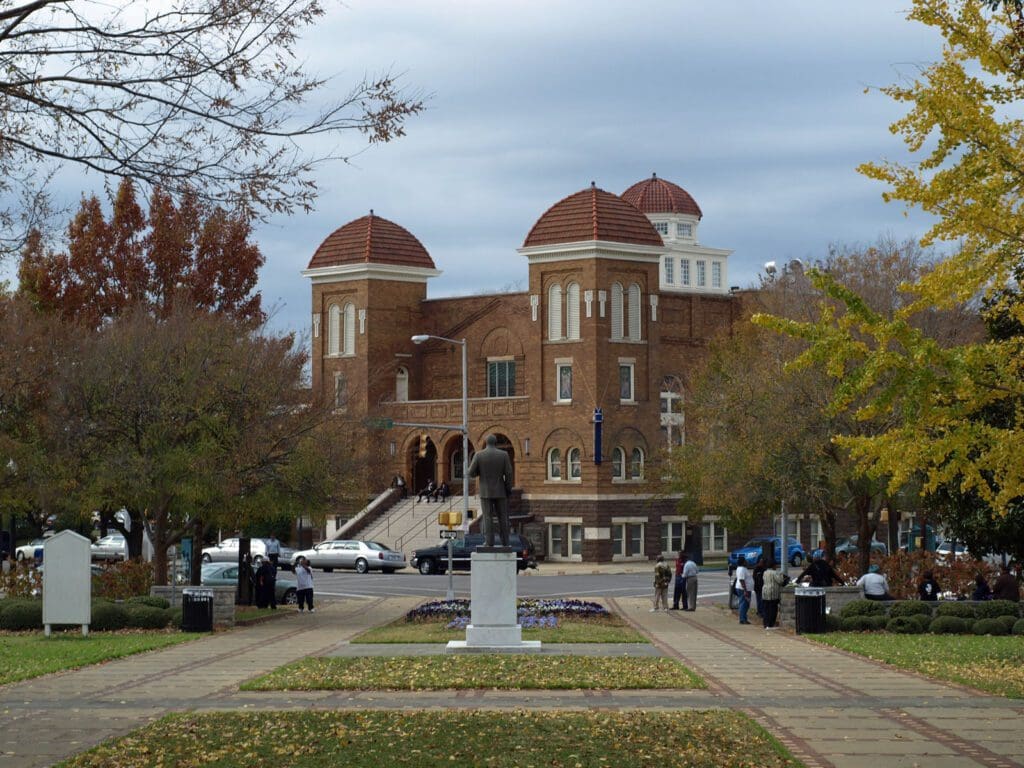
The highlight of this Black history trip is a visit to the Birmingham Civil Rights District. It’s a downtown area where several significant events took place in the 1950s and 60s.
It’s easily walkable (especially for student groups) and includes Kelly Ingram Park, 16th Street Baptist Church, Fourth Avenue Business District, A.G. Gaston Gardens, Carver Theater, and the Birmingham Civil Rights Institute.
More Must-Dos
Before you wrap up your journey, be sure to visit the Tuskeegee Airmen National Historic Site, the Legacy Museum, and the Historic Bethel Baptist Church.
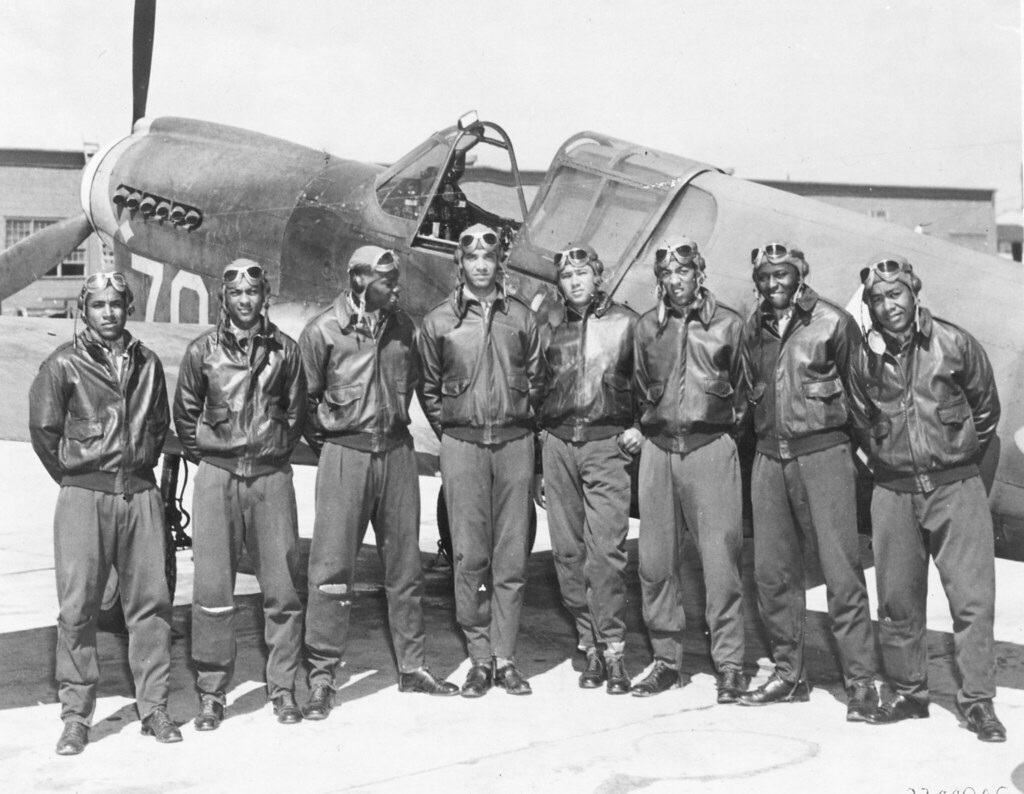
These impressive spots underscore the rich history and legacy of African-Americans, along with their invaluable contributions to American history.
A Civil Rights History Trip Through Alabama
4. Baltimore
It’s impossible to tell the story of Baltimore without highlighting its Black history and the African-American trailblazers that shaped it. From key contributors to the Underground Railroad legends in the arts, Baltimore is an inspiring black history trip destination for students.
Fighting for Freedom and Justice
Frederick Douglass, born into slavery in 1818, became one of the most influential advocates to end enslavement during his lifetime. Students can learn more about his life and critical work at the Frederick Douglass-Isaac Myers Maritime Park, a Living Classrooms Foundation campus and national heritage site.
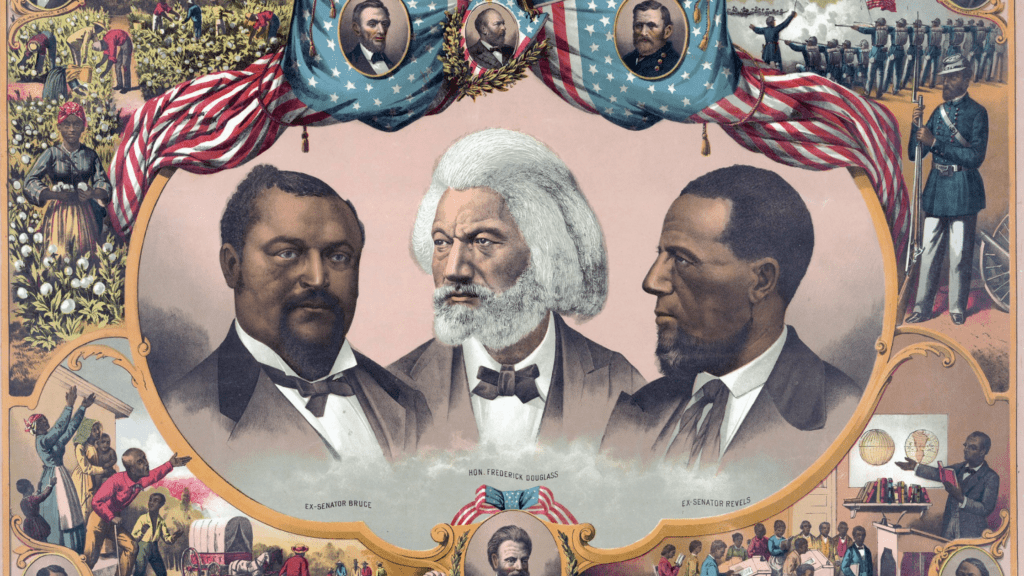
You can also visit the five homes he built on Strawberry Alley (today known as Dallas Street) – a tribute to his prosperity as a free man and influential author.
Next, learn more about Harriet Tubman, another famous Marylander who helped more than 70 enslaved individuals escape to freedom via the Underground Railroad. You’ll find spots memorializing these dangerous missions throughout Baltimore – including Pier 4 outside the National Aquarium and Harriet Tubman Grove near the Baltimore Museum of Art.
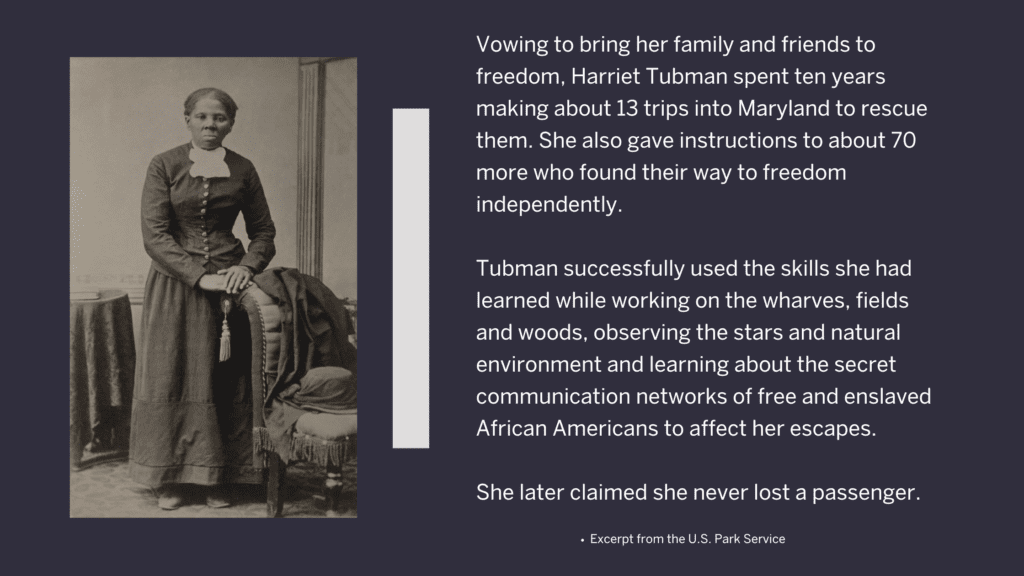
Students can also hear more of the stories of the freedom seekers at B&O Railroad Museum, an official Network to Freedom Site.
Finally, discover Baltimore-born Thurgood Marshall, the first African-American Supreme Court Justice and Elijah E. Cummings, who at age 11 helped to integrate the Druid Hill Park swimming pool. He went on to serve as a U.S. State Representative for 23 years.
Other Historic Highlights
Round out your Black history trip to Baltimore with stops at the Maryland Center for History and Culture, the Baltimore Museum of Industry, the National Great Blacks in Wax Museum, Lillie Carroll Jackson Civil Rights Museum, and the Reginald F. Lewis Museum of Maryland African American History & Culture.
5. The Fredericksburg Civil Rights Trail
Less than an hour from Baltimore, D.C., and Gettysburg (all popular student destinations!) is charming Fredericksburg, Maryland. Tucked into the rolling hills of Frederick County and just off the Historic National Road, Fredericksburg boasts a complex and varied history.
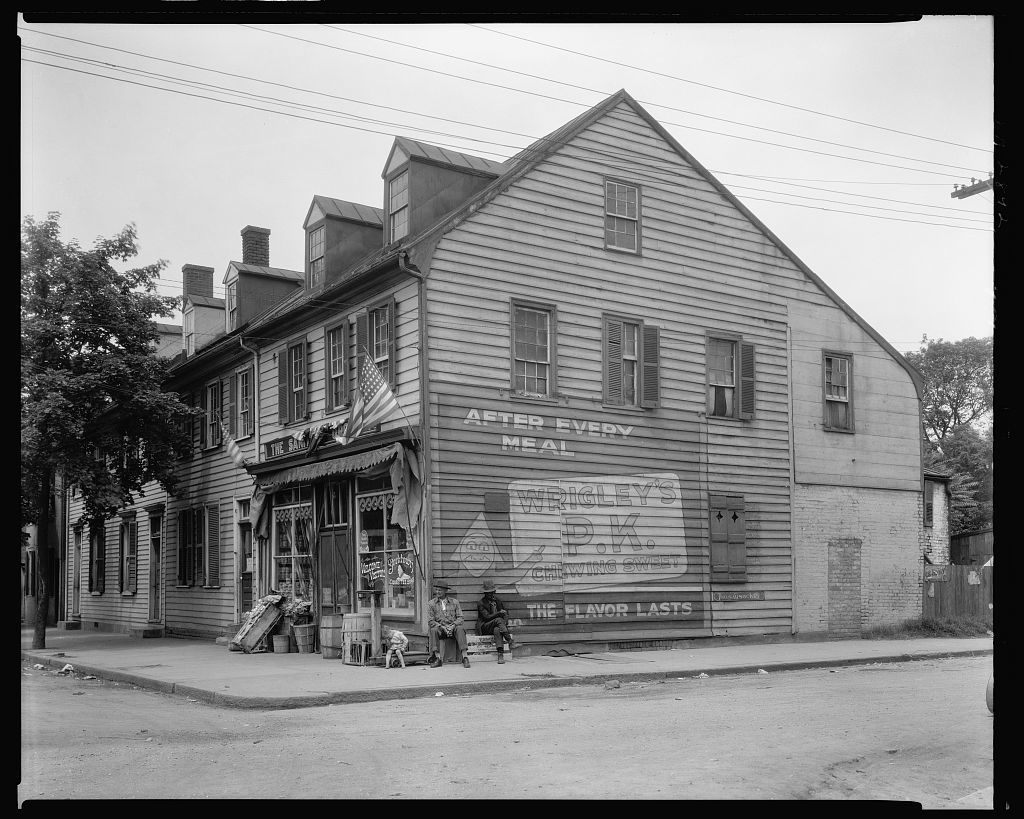
One of its most recent and important additions is the “Freedom, A Work in Progress” Civil Rights Trail. It’s a collaborative effort between the city of Fredericksburg and the University of Mary Washington and includes the people and places that have helped shape the civil rights narrative in the region.
Fredericksburg Civil Rights Trail: History in the Making
6. Buffalo
Maybe Buffalo isn’t the first place you think of when talking about a Black history trip. But its African-American history dates back to the 1790s when Joe Hodge, a former enslaved man, settled on the banks of the Cattaraugus Creek.
Since then, it has been a thriving community of entrepreneurs, musicians, educators, artists, and other key figures.
Discover These 5 Buffalo Black History Firsts
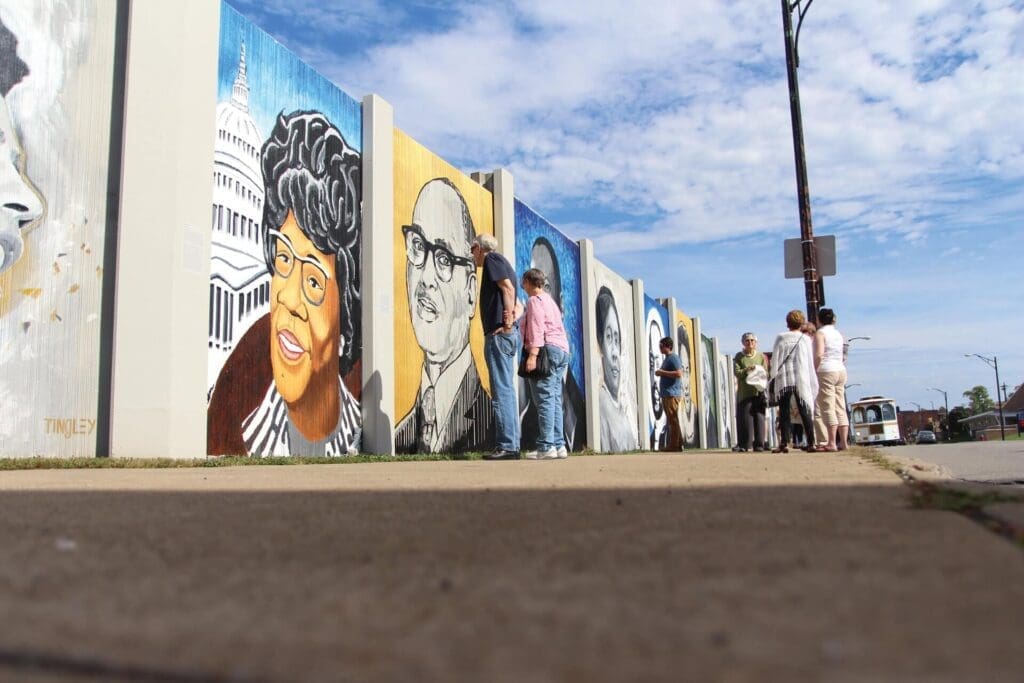
photo credit to Drew Brown and Visit Detroit
An Impressive Legacy
If you want your students to see Buffalo’s Black history in action, take a walking tour of the Michigan Street African American Heritage Corridor.
Here you explore the stories of people and places that have influenced the area. For example, the Michigan Street Baptist Church at 511 Michigan Street was often the last stop on for fugitive slaves on the Underground Railroad before crossing over to Canada.
The Nash House Museum is a virtually untouched peek into the lives of Reverend and Mrs. Nash, a prominent couple who lived here in the early 1900s.
Visit the Historic Colored Musician’s Club and Jazz Museum, where countless stories of music legends and locals rubbing elbows are told. Established in 1917, it remains the only African American club in the United States and is listed in the National Register of Historic Places.
And don’t forget a tour of the WUFO Black Radio History Collective, western New York’s only African-American owned radio station.
The Michigan Street African American Heritage Corridor offers students a connection with the past and those whose creativity and resilience have left an impressive legacy.
7. Detroit
While we know Detroit as the Motor City, it’s also a hub for Black history!
A Roadmap for Freedom
Michigan was an important part of the Underground Railroad. It had roughly 200 stops as freedom seekers made their way across the border to Canada – and many of them were in Detroit.
One of these is the First Congregational Church of Detroit. Refugees hid here until being spirited away by boats on the Detroit River. Today students can take part in a storytelling re-enactment for a deeply personal learning experience.
Continue the journey at the Charles H. Wright Museum of African American History. Here students move through realistic African markets, a former holding cell, the Door of No Return display and a replica slave ship.
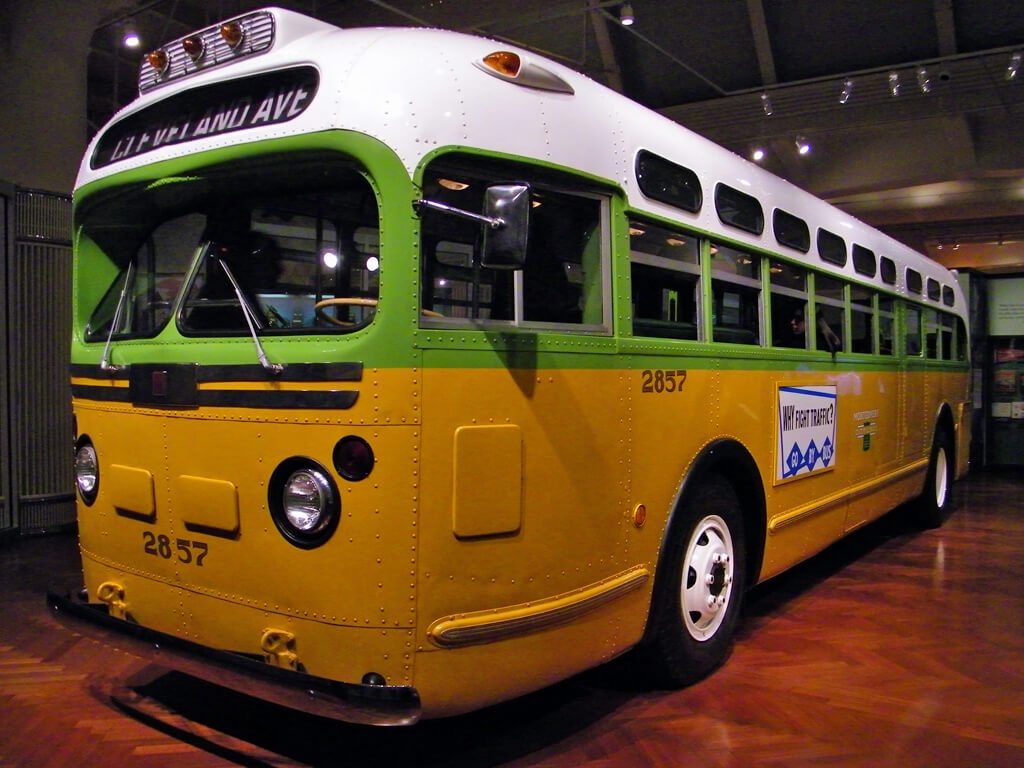
Next, find your way to the Henry Ford Museum where the actual bus on which Rosa Parks famously refused to give up her seat is on display.
And incredibly, you’ll also find the Hermitage Slave Quarters in Greenfield Village. Greenfield Village is an astonishing collection of nearly 100 historic relocated or reconstructed buildings from throughout the United States. It includes the brick quarters that enslaved African Americans built and lived in on the Hermitage Plantation (north of the city of Savannah.)
And one more historic gem? The Logan County Courthouse where the Great Emancipator once practiced law in Illinois was also dismantled and reassembled in Michigan.
The Logan County Courthouse Story
7 Amazing Black History Trips That Will Inspire Your Students
We hope we’ve given you some fresh insights and ideas as you plan your next Black history trip. One more piece of inspiring advice? Plan with Kaleidoscope Adventures for your best trip yet!
Kaleidoscope Adventures has been planning outstanding student travel for more than 30 years. Online registration and payments, convenient crowdfunding options, and an expert team make your planning simple and efficient.
They’ll work with you to plan an exceptional travel experience for your students from start to finish!
REQUEST A FREE QUOTE FOR YOUR NEXT ADVENTURE
Updated January 2025
Why Kaleidoscope Adventures?
As a leader in the student travel industry for 30+ years, Kaleidoscope Adventures exceeds expectations for student and performance group travel.
We’ll work with you to plan an exceptional travel experience and provide impeccable customer service from start to finish
Learn More
